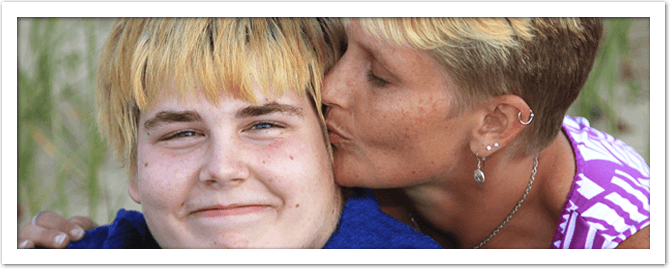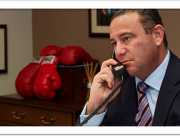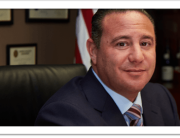From U.S. News and World Report:
We’re discussing this issue on our Facebook Education Law Page. We’d like to hear what you think..
More than 50,000 individuals with autism transition into adulthood each year.
Autism is on the rise: More than 1.5 million people have the condition in the United States alone. But because the majority of these people are younger than 22, the country is on the verge of an “autism tsunami” that could leave thousands without the support they need as they become adults, according to Autism Speaks, an autism advocacy organization.“The current system we have right now is woefully inadequate,” says Angela Lello, director of housing and community living at Autism Speaks. “There are lots of long waiting lists. In some states, it can take as long as 10 years to gain access to [these support] services.”
Defined as a developmental disorder that can impair social, communication and behavioral skills, autism is a spectrum disorder that can range in severity from person to person. Some individuals with autism are considered high-functioning and can live independently requiring minimal, if any, help. Others, however, may need partial or full supervision and assistance to navigate even the most basic tasks of everyday life. “A person who is nonverbal or who has significant intellectual disability will require substantial support in adulthood, and fully independent living will not be possible,” says Thomas Challman, medical director and neurodevelopmental pediatrician with the Geisinger Health System Autism & Developmental Medicine Institute in Pennsylvania.
Every state offers Medicaid-funded programs for people with autism, which can be accessed through each state’s Developmental Disability Agency. These services can include home health aides to help with daily functions such as dressing and bathing, as well as job placement and housing assistance, Lello says. Yet, since more than 50,000 individuals with autism transition into adulthood every year, the support services are already being outpaced by their demand, she adds.
To help fill this gap, President Barack Obama recently signed into law the Autism Collaboration, Accountability, Research, Education and Support Act of 2014. Also known as the Autism CARES Act, it will give $1.3 billion over five years to fund autism research and detect gaps in support for children and adults with autism who are aging out of childhood programs and transitioning into those designed for adults.
“We need to do a better job of preparing children with [autism spectrum disorder] for adulthood and provide the help and services they need to reach their full potential,” said the bill’s co-sponsor Rep. Chris Smith, R-N.J., on the House floor in June. “The Autism CARES Act tasks multiple federal agencies to study and report back to Congress on the special needs of autistic young adults and transitioning youth. In light of the severity of the aging-out crisis, we must do more – and fast – and ensure we are providing a comprehensive and thorough review of available services, and those we need to create.”
But as parents wait for more services to become available, there are options available now to help children with autism thrive, says Challman, starting with early intervention therapy. “ Parents of children with [autism] can improve the likelihood of independent living by accessing, early and consistently, the types of therapies that help improve their child’s communication and social skills,” he says – areas that have significant impact on a child’s ability to succeed in work and social settings.
Early intervention programs are available in every state for any child under age 3 who demonstrates a developmental delay, regardless of whether parents have health insurance,? thanks to a federal mandate, which requires states to cover the costs of these programs if parents cannot afford them. ?What programs states are required to cover can vary,? but no matter the technique, early intervention therapies all seek to help combat symptoms while the brain is still taking shape.
“The brain is not fully connected at birth,” says Susan Hyman, an autism expert in the Department of Pediatrics at the University of Rochester Medical Center in New York. “As the brain continues to mature, it makes new neural connections and gets rid of unused ones over the first several years of life.”
Red flags for autism include a lack of joyful expressions by 6 months of age, no babbling by 12 months and no words by 16 months. While autism cannot be cured, early intervention therapy is the best tool available to help treat children with the condition, offering an opportunity to help overcome? brain abnormalities, Hyman says.” When early red flags for autism are identified, what therapy can do is help children come up with workarounds and provide them with experiences that will help them move forward developmentally,” she explains. Workarounds can include helping children learn sign language or to point at pictures to convey what they want.
As children with autism get older, therapy should continue?, Challman says, to deal with any issues that may arise or hinder their ability to function in everyday life. Some people may continue to need speech therapy or help with social skills, while others may require psychological counseling? ?to combat the anxiety and depression that often accompany autism.
“Mental health services can and should be accessed to help manage common issues such as anxiety and depression,” Challman says. Because social skills are “extremely important” in the workplace, it’s imperative to continue cultivating them, too, he adds.
Andrew Duff, 24, of New York City, says he benefited from both approaches. Diagnosed with autism just before his third birthday, Duff’s parents promptly enrolled him in an early intervention program consisting of therapy designed to help him learn to walk, talk and interact with others. The early therapy worked, and by fifth grade, Duff no longer needed assistance in school nor was he required to be in a special education class.?
Duff backslid a bit when he went off to college, but working with a therapist helped him get back on track. “I started to regress because I was living on my own,” he says. “Being in a new place, everything was different and my social skills took a hit. It became hard for me to maintain eye contact. It took me a year to get back to where I was.”
Today, Duff works as a production assistant for Autism Speaks and also travels the country as a performance artist.? Considered a high-functioning adult with autism, Duff says people are often surprised to learn he has the condition. While not all children with autism will experience an outcome like Duff’s, research indicates that early intervention therapy is beneficial to even those on the severe end of the spectrum, according to the American Academy of Pediatrics, which recommends that all babies be screened for autism at 18 and 24 months of age.?
As the “autism tsunami” looms – 1 in every 68 kids continue to be diagnosed with the condition – Duff has this advice for parents of children with autism: “Take them for therapy,” he says. “Nurture what you can, and set them up for the best life possible, just like you’d do for any child.”
Read more from U.S. News and World Report…







Leave A Comment